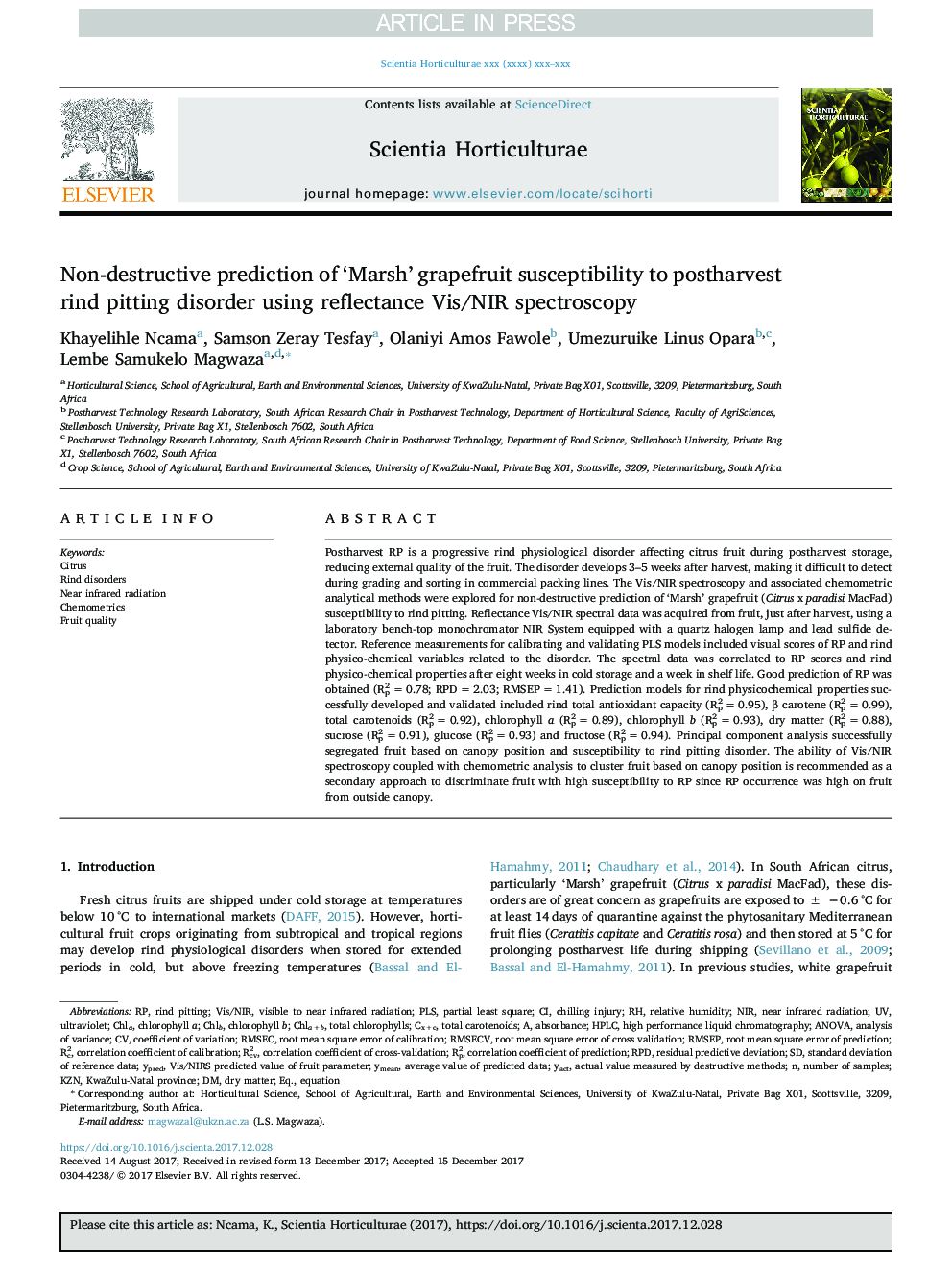| Article ID | Journal | Published Year | Pages | File Type |
|---|---|---|---|---|
| 8893009 | Scientia Horticulturae | 2018 | 7 Pages |
Abstract
Postharvest RP is a progressive rind physiological disorder affecting citrus fruit during postharvest storage, reducing external quality of the fruit. The disorder develops 3-5 weeks after harvest, making it difficult to detect during grading and sorting in commercial packing lines. The Vis/NIR spectroscopy and associated chemometric analytical methods were explored for non-destructive prediction of 'Marsh' grapefruit (Citrus x paradisi MacFad) susceptibility to rind pitting. Reflectance Vis/NIR spectral data was acquired from fruit, just after harvest, using a laboratory bench-top monochromator NIR System equipped with a quartz halogen lamp and lead sulfide detector. Reference measurements for calibrating and validating PLS models included visual scores of RP and rind physico-chemical variables related to the disorder. The spectral data was correlated to RP scores and rind physico-chemical properties after eight weeks in cold storage and a week in shelf life. Good prediction of RP was obtained (R2pâ¯=â¯0.78; RPDâ¯=â¯2.03; RMSEPâ¯=â¯1.41). Prediction models for rind physicochemical properties successfully developed and validated included rind total antioxidant capacity (R2pâ¯=â¯0.95), β carotene (R2pâ¯=â¯0.99), total carotenoids (R2pâ¯=â¯0.92), chlorophyll a (R2pâ¯=â¯0.89), chlorophyll b (R2pâ¯=â¯0.93), dry matter (R2pâ¯=â¯0.88), sucrose (R2pâ¯=â¯0.91), glucose (R2pâ¯=â¯0.93) and fructose (R2pâ¯=â¯0.94). Principal component analysis successfully segregated fruit based on canopy position and susceptibility to rind pitting disorder. The ability of Vis/NIR spectroscopy coupled with chemometric analysis to cluster fruit based on canopy position is recommended as a secondary approach to discriminate fruit with high susceptibility to RP since RP occurrence was high on fruit from outside canopy.
Keywords
R2CRMSECPLSVis/NIRNIRCx+cRMSECVRMSEPRPDChilling injuryUltravioletNear infrared radiationanalysis of varianceANOVANumber of samplesAbsorbancepartial least squareroot mean square error of predictionRoot Mean Square Error of CalibrationRelative humidityRoot mean square error of cross validationCoefficient of Variationdry matterCitrusEquationEq.ChlaChlbhigh performance liquid chromatographyHPLCTotal carotenoidsChlorophyll achlorophyll bChemometricsFruit quality
Related Topics
Life Sciences
Agricultural and Biological Sciences
Horticulture
Authors
Khayelihle Ncama, Samson Zeray Tesfay, Olaniyi Amos Fawole, Umezuruike Linus Opara, Lembe Samukelo Magwaza,
